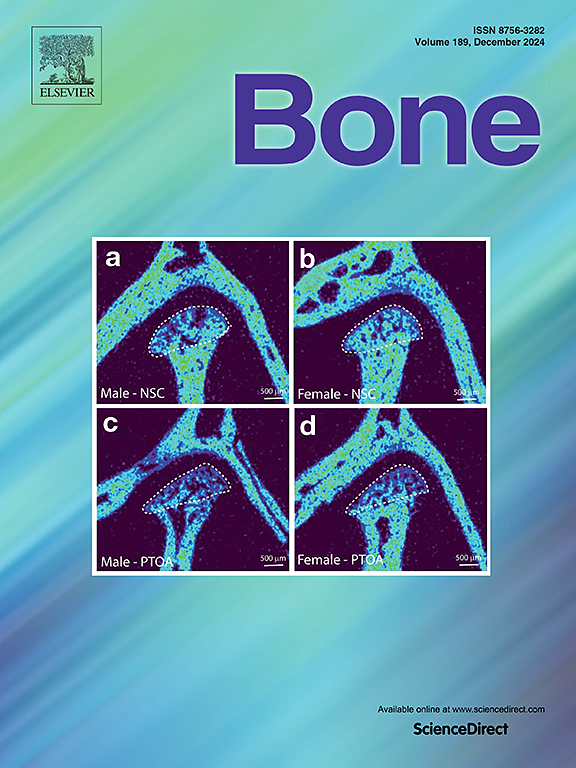Understanding the variation of volumetric bone mineral density in the femur and tibia in a paediatric population
IF 3.6
2区 医学
Q2 ENDOCRINOLOGY & METABOLISM
引用次数: 0
Abstract
Childhood and adolescence are crucial time for bone mineral accumulation with 25 % of bone mineral density (BMD) being laid during puberty. BMD development during growth was found to be correlated with the development of osteoporosis later in life. Mapping the variation of BMD in a paediatric population is important to understand how BMD change with age and sex. Therefore, the aim of this study was to evaluate the variation of BMD in the long bones for a paediatric population. CT-scans of 333 children and adolescents aged from 4 to 18 years were used to reconstruct 657 femora and 652 tibiae. Volumetric meshing and material mapping was performed for all bones with a CT-calibration phantom. Volumetric BMD was calculated for each femur and tibia and analysed by regions of interest, femur and tibia proximal and distal epiphysis, shaft, femoral head, neck and greater trochanter. A statistically significant interaction between the effects of age and sex were found in all regions of the femur and tibia with a significant simple main effect associated with age between male and female and with sex at age 11 and 14. Correlation between vBMD and participants' age, height and weight were mostly found in the distal tibia and tibial shaft. Interestingly, the vBMD at the femoral head, neck and greater trochanter did not increase with age. This study is the first to report on the variation of vBMD with age and sex from children and adolescents aged from 4 to 18 years.
了解儿科人群股骨和胫骨体积骨密度的变化
儿童期和青春期是骨矿物质积累的关键时期,25%的骨矿物质密度(BMD)在青春期形成。生长期间骨密度的发展被发现与晚年骨质疏松症的发展有关。绘制儿科人群骨密度的变化图对于了解骨密度随年龄和性别的变化是很重要的。因此,本研究的目的是评估儿童长骨骨密度的变化。对333名4至18岁的儿童和青少年进行了ct扫描,重建了657根股骨和652根胫骨。使用ct校准幻影对所有骨骼进行体积网格划分和材料映射。计算每个股骨和胫骨的体积骨密度,并通过感兴趣区域、股骨和胫骨近端和远端骨骺、骨干、股骨头、颈部和大转子进行分析。年龄和性别对股骨和胫骨的影响在统计上有显著的相互作用,在11岁和14岁时,男性和女性的主要影响与年龄有关,与性别有关。vBMD与年龄、身高、体重的相关性主要出现在胫骨远端和胫骨干。有趣的是,股骨头、颈部和大转子的vBMD并没有随着年龄的增长而增加。这项研究首次报道了4至18岁儿童和青少年的vBMD随年龄和性别的变化。
本文章由计算机程序翻译,如有差异,请以英文原文为准。
求助全文
约1分钟内获得全文
求助全文
来源期刊

Bone
医学-内分泌学与代谢
CiteScore
8.90
自引率
4.90%
发文量
264
审稿时长
30 days
期刊介绍:
BONE is an interdisciplinary forum for the rapid publication of original articles and reviews on basic, translational, and clinical aspects of bone and mineral metabolism. The Journal also encourages submissions related to interactions of bone with other organ systems, including cartilage, endocrine, muscle, fat, neural, vascular, gastrointestinal, hematopoietic, and immune systems. Particular attention is placed on the application of experimental studies to clinical practice.
 求助内容:
求助内容: 应助结果提醒方式:
应助结果提醒方式:


